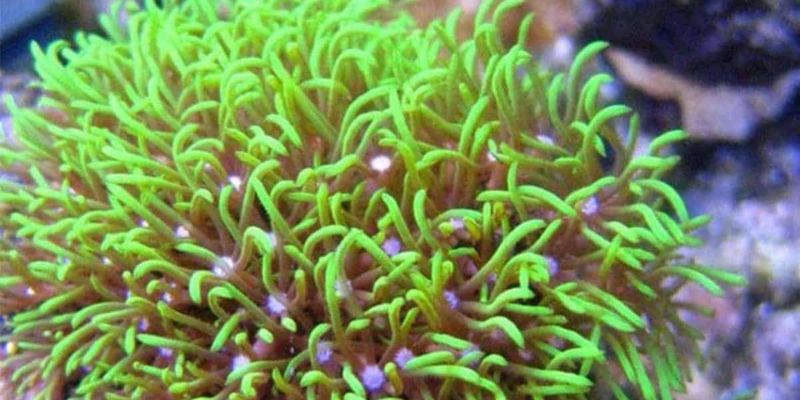The Green Star Polyp, or Clavularia Viridis, is the subject of this in-depth guide. This article will introduce you to the intriguing world of these amazing aquatic critters and offer you with detailed information about them so that you may better appreciate their individual qualities. Everything you need to know, from how they look to “Clavularia Viridis Green Star Polyps in 2023′, is right here. Let’s just jump in, shall we?
Clavularia Viridis Green Star
Green Star Polyps (Clavularia Viridis) are a type of soft coral that are part of the family Clavulariidae. Due to their eye-catching green hue and impressive polyp expansion, these magnificent animals have quickly become popular among reef aquarium keepers of all skill levels.
Outward Manifestations
From their encrusting base, green star polyps extend tiny finger-like extensions called polyps. The range of green colors displayed by these polyps, from bright emerald to dark forest, is stunning. Under the right lighting, the vibrant colors really pop, making them a stunning addition to any aquarium.
Clavularia Viridis Green Star Polyps in 2023
Clavularia Viridis require a specific type of environment for optimal health and development. Here are the most important things to think about:
Lighting
GSPs do best in bright to very bright light. Full spectrum lighting, such as LED or T5 fluorescent lights, is recommended to create an environment similar to their natural one. The true beauty of these organisms is shown when exposed to the right lighting, which not only brings out their colors but also encourages polyp extension.
Water Quality Indices
Green Star Polyps require consistent water conditions to thrive. Here are the parameters for optimal water use:
- A comfortable temperature of around 24–27 degrees Celsius (75–80 degrees Fahrenheit)
- Specific gravity of saltwater is 1.023–1.025
- pH: 8.1-8.4
- There should be no detectable quantities of ammonia, nitrate, or nitrite.
Information on Caring for Clavularia Viridis
Keep your Green Star Polyps healthy and happy by following these guidelines:
Water Quality
Regular water changes, filtration, and parameter monitoring are essential for achieving and sustaining high standards of water quality. Regular testing with accurate kits is essential to maintaining stable water quality; any deviations should be quickly addressed.
Placement
Locate your GSP colony in an area where there is some water movement. Keep them out from under direct exposure to strong water currents, since this could stunt the growth of their polyps. Keep Clavularia Viridis colonies and other corals at a safe distance from one another to avoid territorial fights and aggressive expansion.
Feeding
Green Star Polyps are mostly photoautotrophs that get their food from zooxanthellae. Nevertheless, supplementary eating can help them. A few times a week, feed little bits of meaty meals like brine shrimp or finely diced mysis shrimp to boost nutrition.
Methods of Propagation
As a result of its fast reproduction rate, Clavularia Viridis is a popular choice among aquarists who want to increase the size of their coral colonies. Two methods of widespread dissemination are as follows:
Fragmentation
To fragment a GSP colony, one removes a small section of the colony and reattaches it to a different substrate. If you use a clean, sterile cutting tool and provide the newly attached piece access to food, water, and light, it will eventually grow into a whole colony.
Consolidating Crust
The encrusting development of Green Star Polyps is another method of spontaneous reproduction. The colony multiplies by attaching additional polyps to nearby surfaces. You can enjoy an ever-expanding exhibition of these fascinating critters by creating conditions favorable to the production of new colonies.
Conclusion
Green Star Polyps, or Clavularia Viridis, are a beautiful addition to any reef tank. Hobbyists love these corals because of their eye-catching green color, fascinating polyp elongation, and quick reproduction rate. If you provide these aquatic organisms the best possible conditions by following the advice in this guide, you may bring some of the ocean’s beauty and mystery into your own home.
The long-term success of your Clavularia Viridis depends on your awareness of their demands, maintaining water quality, and following suitable care practices. Good luck with your reef!


More articles like this would remedy the blogosphere richer.